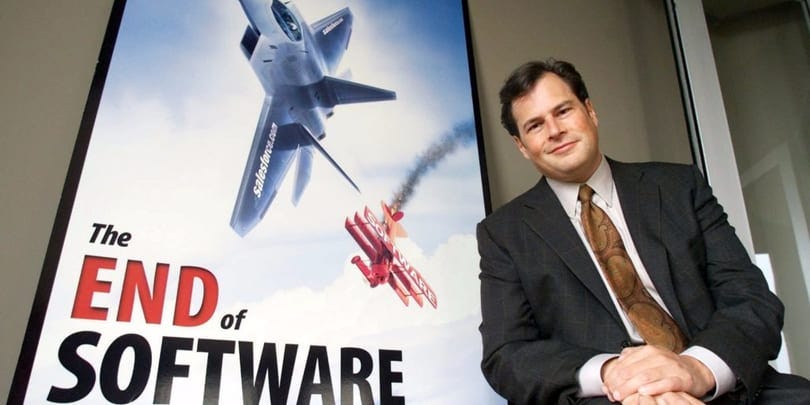Salesforce: A New Era?
Q1 2024 results were as expected, but its continuing focus on margins and shareholder return marks a new phase for the company. By Benjamin Tan
In 1999, Marc Benioff created Salesforce ($CRM) in response to what he saw as excessive friction in the industry then. He wanted to democratize enterprise software solutions and disrupt the prevailing practice of in-person installation, maintenance, and updates. Instead of requiring hefty, upfront investments in hardware and networking that would keep out all except the most endowed of organizations, any customer could access powerful business applications for a small fee on a per user, per month basis, delivered immediately in the cloud.
And so, Salesforce was born, pioneering a software-as-a-service (“SaaS”) subscription model. It would go on to become one of fastest growing enterprise software companies in history and consequently forced competitors to rethink their business models.
It was the beginning of a new era for software.
End of Software
The ironic slogan “The End of Software” was used by Salesforce in the 2000s to promote its revolutionary plug-and-play model to potential customers. The tagline “No Software” was catchy, though inaccurate. There is, of course, still software running in any SaaS model, just no need for traditional modes of installation. It did not matter – Benioff was a consummate salesman and the marketing worked incredibly well to establish his cloud-hosted customer relationship management application in the mainstream.
Salesforce – A New Era
In the current market, the term “No Software” takes on another meaning. One can read it as a rejection of all things SaaS companies once stood for: user growth at all costs, cash burn, excessive stock-based compensation, large losses (GAAP and non-GAAP), high valuation multiples based on optimistic sales forecasts, constant capital raises to leverage high stock price, and ambitious mergers and acquisitions.
Amid a slowing economy, Benioff is once again pivoting Salesforce – and himself – to fit a new narrative: profits, profits, profits.
And oh, artificial intelligence.
Q1 2024: Some Highlights
Revenue grew by 13% on a constant currency basis
Significantly exceeded non-GAAP operating margin target, clocking in at 27.6%
For the fiscal year 2024, non-GAAP operating margin is targeted to hit 28%
Salesforce was GAAP net income profitable
Current remaining performance obligation grew by 12%, which is consistent with the low teens topline growth expected by the market for the coming quarters. Salesforce did not raise topline guidance for the full year
Stock-based compensation continues get reined in; combined with aggressive share buyback, total shares outstanding fell from 1bn to 974mn between March 2023 and end-May, a sequential fall not seen before
Operating cashflow grew 22%, much faster than topline, as fiscal prudence continues to transpire in both income statement and cashflows
By and large, Q1 2024 earnings release was a non-event. Key themes of cost control, higher margins, no M&A, and share buybacks were already mentioned on the Q4 2023 call.
Management did not reiterate FY 2026 $50bn revenue target, which remains uncommitted.

Conclusions:
Like many companies in 2023, artificial intelligence was a focus on the Q1 2024 earnings call with at least 60 mentions, compared to just 12 the quarter prior. Benioff even told a tale of his dinner with Sam Altman, CEO of OpenAI. I think I did an eyeroll when I heard that.
Below is the Slack + OpenAI video Benioff mentioned on the call:
Salesforce is clearly not immune to slowing deal cycles and more cautious customer spending, even on mission critical software. But in this market, size (at $30bn+ topline and still growing) is even more advantageous to Salesforce, relative to other software companies. They have plenty of runway to readjust their cost structures and pump-up margins, without needing to sacrifice long term investment focus (including AI initiatives) and still have resources to reduce share count.
Salesforce will continue to stick around – judging by its low churn, solid platform, and high international growth – with a growing cash pile that will prove even more strategic in this new era of software.
(Author is long $CRM)
Join Consume Your Own Tech Investing to receive a welcome email with the following:
Latest Top 10 conviction Consumer and Tech positions in my portfolio
Book recommendations on investing, consumer and technology sectors
One article delivered into your inbox every Tuesday
Preview of upcoming articles
Follow me on Twitter @ConsumeOwnTech and Commonstock @ConsumeOwnTech



